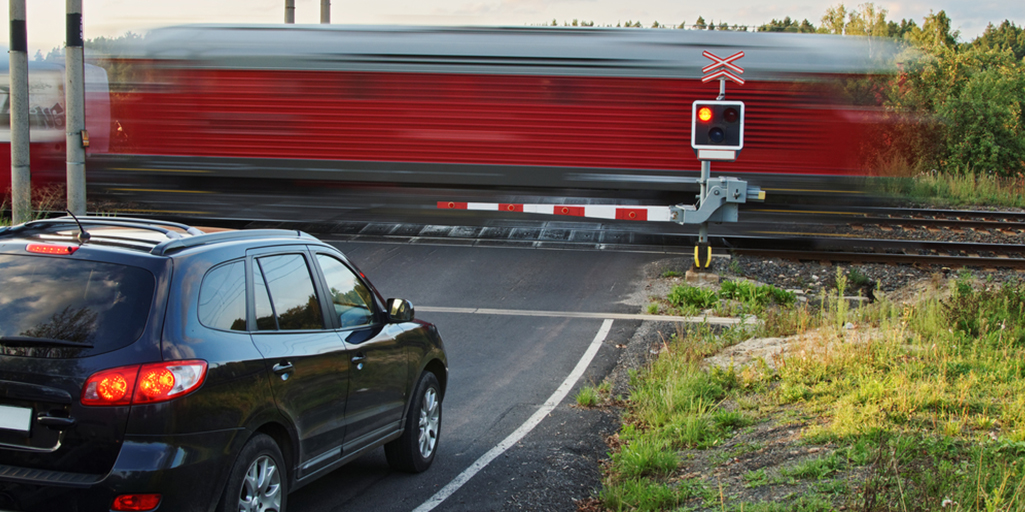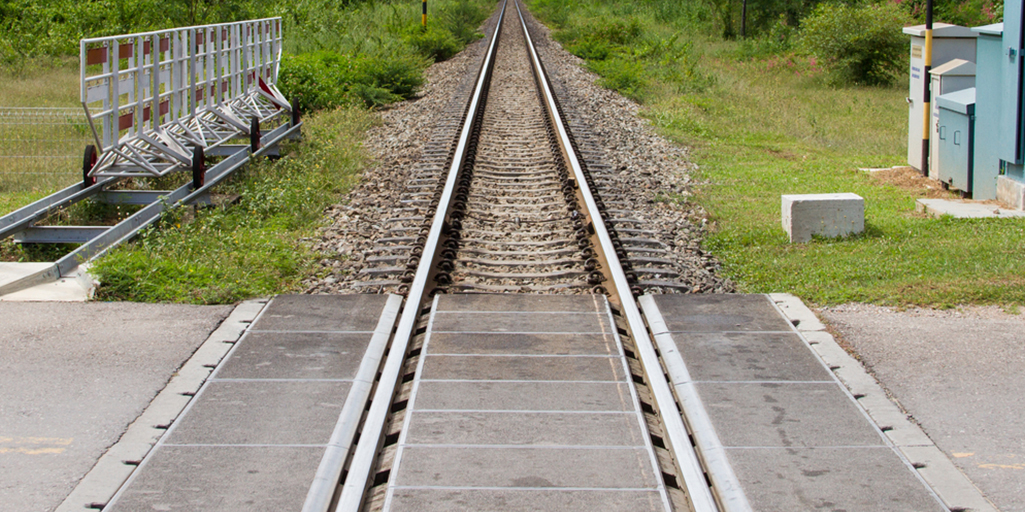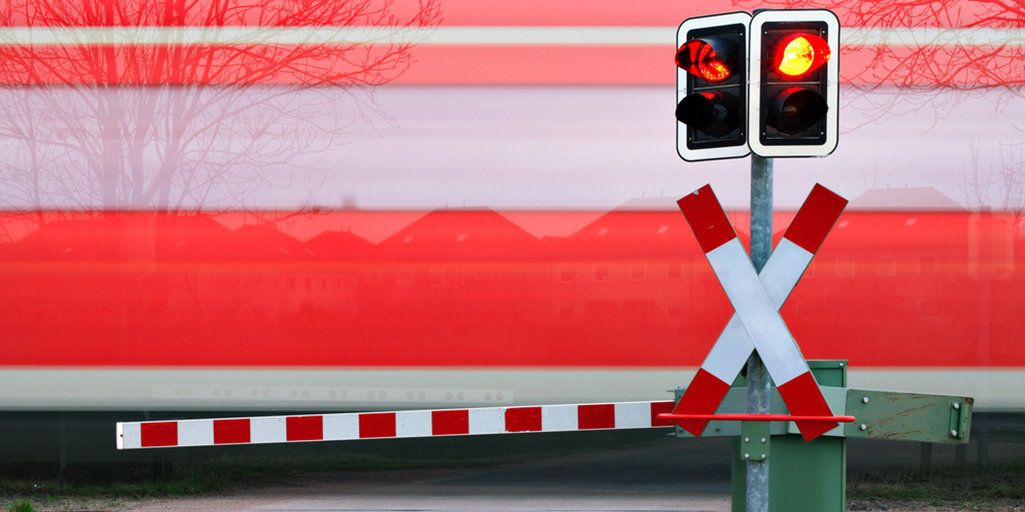We use cookies and other proprietary and third-party technologies to make our website work correctly and securely. We also use them to analyse user browsing and be able to adapt advertising to your tastes and preferences. Cookies Policy.
Level crossings, which are widely considered to be an anachronism, are the main cause of some fatal accidents. Because it is costly and difficult to alter these road connections, there are still more than 3,000 in Spain.
The fact that they even exist, according to many specialists, is an anachronism. Level crossings –intersections where railways and highways intersect—not only belong to an earlier world; they also pose deadly risks. Each year, dozens of serious accidents take place on these crossings. And although they are gradually becoming a thing of the past, there are still thousands left. Although removing them is unambiguously seen as the right thing to do, the cost and difficulty of modifying them makes it complicated.

To get an idea of what these spaces involve, it is necessary to first understand the differences between active and passive level crossings. Representatives of the Group of Sociology of Transport and Railway Safety of the Spanish Railways Foundation (FFE) explain the differences: “A level crossing is any intersection, on the same level, of a road or other means of communication with the railway lines. At level crossings, rail traffic has the right of way and uses safety and signaling systems depending on its classification, which are supposed to ensure everyone’s safety.”
These security systems are what define whether a level crossing is active or passive. “Passive crossings do not have any warning system (light and/or acoustic signals) and no protection (barriers, semi-barriers, gates, or chains). On the highway or path there is only horizontal and vertical signage, which warns of the proximity of the level crossing without a barrier,” they explain, “while active crossings use physical devices (light and acoustic signals, fixed signs, barriers, automatic obstacle-detectors, etc. on the crossing), to let drivers and pedestrians know when it is not safe to cross.”
Both types of crossing are plentiful in Spain. And in the last five years (from 2017 to 2021) 29 people died in the 37 major accidents recorded at level crossings, according to the State Agency for Railway Safety (AESF), with up to 98% of accidents being the result of user error.
“At level crossings, rail traffic has the right of way and uses safety and signaling systems which are supposed to ensure everyone’s safety.”
Level crossings date back to the expansion of the railway, which required a new arrangement in both cities and rural areas: railway tracks needed to cross urban centers and remote areas where there were roads and paths. This new urban order made it necessary to build these intersections for trains to pass, and, in parallel, for people, cars and cattle.
In 1975, for example, there were 10,795 public level crossings in Spain. These figures have been declining, but level crossings have not disappeared, despite the fact that, since 1978, various regulations have been implemented for their removal. The latest official data from the Transport and Logistics Observatory, for 2019, states that in Spain there are still 3,148 level crossings. That number must be lower in 2020, since 34 have been removed, according to the AESF. And numbers will continue to decrease in the coming years, given that the Level Crossing Elimination Plan for 2017-2024 proposes the removal of another 74.
“The gradual removal and improvement works are ongoing,” say representatives of the FFE, which acknowledges that regional governments are making a “significant effort.” The group of experts from this association offers some data: “Conventional and metric gauge railway networks have 2,996 level crossings. Between 2018 and 2021, the investments made by Adif (the public railway company) in terms of removing and improving level crossings totaled over €38m (€18m in 2021), with the closure of 200 level crossings and the improvement of the protection of another 14 with the installation of light and acoustic signals.”

Dismantling them, however, is an arduous and expensive task: removing one costs approximately €1.5m, although if the work requires different structures and road variants, it can cost up to €6m, as noted by the DGT, using Adif data. “The removal by Adif of 299 level crossings required an investment of €300m. The administrator is gradually carrying out the project to remove all level crossings,” we are told by the FFE. In addition to the economic cost, they argue, it is necessary to consider the difficulty of agreeing on a solution with those involved (the owner of the road, political leaders of the towns affected, residents, etc.).
And, despite these difficulties, Spain is the second country in the European Union, behind Bulgaria, with the lowest density of level crossings: fewer than 25 per 100 kilometers, according to data provided by the FFE of the European Safety Agency. “Spain is below countries like The Netherlands, Finland, Sweden, France, Germany and Belgium,” they acknowledge, alluding to the fact that sometimes they exceed 75 per 100 kilometers and stressing that “in no case” is this problem exclusive to Spain: “According to the UIC (International Union of Railways), there are more than half a million level crossings throughout the world and in Spain there are fewer than 3,000.”
Even with that dwindling network, accidents happen. They usually occur, as already mentioned, due to human error. José Manuel Liberal, from the FFE Transport Sociology Research Group, told the DGT magazine that “some users are unaware of the real risks involved in the improper use of level crossings,” and identified key factors in these behaviors: “familiarity, misjudging the speed and distance of trains, and deliberate risk-taking. This may be due to a lack of awareness of the regulations and a misperception of the dangers.”
All associations and experts emphasize the dangers posed by these facilities. As an example, they say that a train, which is heavy and fast, needs a lot of space to brake (if it is traveling at 160km/hour, it needs one kilometer to come to a stop). That is why they have the right of way and that is why they are usually the most forceful element. According to Eurostat, in 2020 there were 350 accidents at level crossings throughout the European Union and 213 people died. Poland leads the ranking, with 47 deaths.

These catastrophes are due to several causes. According to the results of the SAFER-LC European research project (led by the UIC, with the participation of the Spanish Railways Foundation), 30 indicators related to the human factor were recorded, regarding errors and requirements or infractions, which were classified into seven categories: information about the context (for example, adverse weather conditions), personal conditions (such as tiredness), lack of knowledge about the correct use of level crossings, lack of attention (due to the use of cellphones, among others), misperception of risk (due, perhaps, to familiarity with the environment), visibility of intersections and trains (miscalculation of distance) and intentionally risky behaviors (such as drug use).
“Constant work is necessary to raise awareness and share information on how to be safe in railway environments, as well as knowing how to cross the tracks safely,” Liberal stressed in the DGT magazine. “Our department is designing a plan aimed at promoting safety and awareness in railway environments that includes actions, programs, education and awareness tools and recommendations that can help those involved in these environments, the educational community, the emergency services , etc., to increase security in these spaces,” he added, joining other initiatives to reduce the negative impact of level crossings. An anachronism whose time is up, but where we must still exercise an abundance of caution.
Notice: Trying to access array offset on value of type null in /DATA/sites/ontheroadtrends.com.preproduccion.com/webspace/wp-content/themes/ontheroad2023/templates/newsletter.php on line 3
Notice: Trying to access array offset on value of type null in /DATA/sites/ontheroadtrends.com.preproduccion.com/webspace/wp-content/themes/ontheroad2023/templates/newsletter.php on line 4
Notice: Trying to access array offset on value of type null in /DATA/sites/ontheroadtrends.com.preproduccion.com/webspace/wp-content/themes/ontheroad2023/templates/newsletter.php on line 5